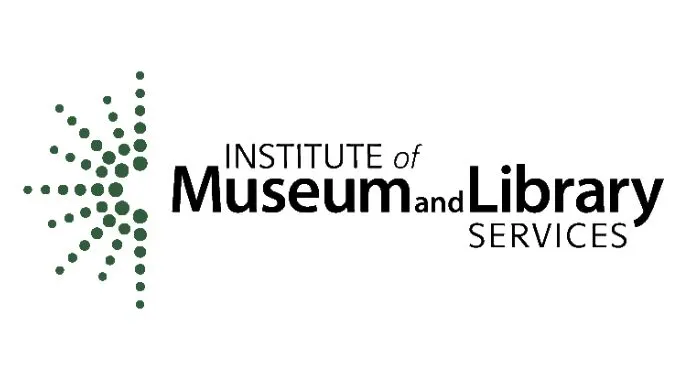The Qing, China’s last imperial rulers (1644–1912), had doubled the empire’s size by 1800, while its population roughly tripled. Later, however, they were routinely blamed by Westerners, Chinese nationalists, and many modern scholars for stunting Chinese “development” by being too strong—or too weak. During the Cold War the more common complaint was of excessive strength. China, the story said, lacked constitutional checks, so the Qing had ruled despotically, causing intellectual, social, and economic stagnation. That argument fit comfortably with long-standing Orientalist stereotypes and backward projections of Maoist authoritarianism. But it fit less well with the historical record, which shows a modest Qing presence in local society: the vast majority of Qing subjects would have never encountered a salaried official.
Recent scholarship has emphasized inadequate government more than authoritarian excess. Within China proper, the Qing employed roughly as many officials in 1850 as their Tang predecessors had in 750, but they ruled a population some six times larger; their armies were slightly smaller than Song forces in the 1080s; and around 1780, state revenues were perhaps 3–4 percent of China’s GDP, compared to 9 percent (and occasionally more) in France. In supposedly laissez-faire Britain, taxes were 12 percent of GDP around 1780 and reached 18 percent during the Napoleonic Wars. And as Qing archives opened in the 1970s and 1980s, historians unearthed a legal system that, while certainly authoritarian, generally upheld private property. These facts led historians to highlight the many ways in which nonofficials managed early modern China—running schools and temples, handling poor relief, building and maintaining infrastructure, and both clashing and collaborating with officialdom.
Two recent books are fruits of this rethinking. They offer insights not only about China but about states elsewhere—mostly in Europe—that are often taken to represent more “normal” developmental paths during the early modern period (circa 1450–1850).
In The Ideological Foundations of Qing Taxation, the legal and economic historian Taisu Zhang asks why the Qing contented themselves with revenues that were limited to a small and shrinking share of GDP for 150-plus years, not only choosing not to keep up with growth during the relatively peaceful, prosperous 1700s but refusing to raise land taxes even after the Opium Wars (1839–1842 and 1856–1860), the rebellions of 1851–1877 (which took tens of millions of lives), and other disasters had made the need for greater state capacity obvious. Public Interest and State Legitimation, by the historical social scientist Wenkai He, explores how basic public goods were provided with such a small state, arguing that the patterns of governance resemble early modern England and Japan more than one might expect. Building on these similarities, it challenges a widely accepted truism about early modern states in general: that their development was largely driven by incessant war-making and its fiscal requirements. He focuses instead on how states, together with local elites, provided public goods—and how meeting popular expectations for them helped legitimize their rule, until it became impossible to afford both such goods and military projects, forcing radical political changes.
In 1712 the Qing emperor essentially froze the government’s land tax revenue, at levels already below what the Ming (1368–1644) had demanded in the 1630s. The Qing maintained that policy, with minor exceptions, until the 1880s—remarkable for a state that had a growing economy and could rule by decree but that, by roughly 1800, faced needs that far outstripped its resources. Since land taxes were roughly two thirds of Qing revenues, keeping these levels was, ultimately, close to suicidal. So why do it?
Zhang convincingly debunks explanations that rely entirely on rational motivations. True, the Qing government had enough money to achieve its goals during its first 150 years: around 1790, having conquered various rivals and created China’s largest empire, it still held reserves exceeding two years’ worth of revenue. But these reserves were mostly gone by around 1800, and while commercial tax increases (mostly after 1853) enabled the state to survive mid-nineteenth-century civil wars, few people thought it was strong enough to address China’s underlying problems. Nonetheless land taxes rose only during a last-ditch flurry of post-1900 reforms. And while officials typically came from wealthy families and often protected their interests, this would hardly explain the pattern of Qing taxation: contrary to the stereotype of China’s “gentry” as a class of landlord-officials, many came from families at least equally engaged with commerce, on which the Qing raised taxes significantly.
Zhang’s explanation comes from a psychologically inflected history of ideas. Elites, he argues, were shocked by the late Ming peasant revolts—the biggest against Han Chinese rulers in at least eight hundred years—and traumatized when they led to conquest by the “barbarian” Manchus who established the Qing dynasty. Those elites attributed the rebellions to the numerous tax increases of the 1580s–1630s, even though, as Zhang readily acknowledges, this is not persuasive: overall rates were still pretty low, and other factors—from the Little Ice Age’s effect on seventeenth-century harvests to widespread epidemics and wild price fluctuations—hurt the peasantry much more. Indeed, the Ming had probably needed to raise taxes more (or at least collect them more efficiently): state-organized famine relief fell apart when it was needed most, unpaid soldiers deserted, and the rebellion that took Beijing in 1644 was led by a laid-off postal station attendant.
Zhang reasons that the tax revolt explanation probably appealed to Han elites because the Confucian classics—especially the works of Mencius (circa 372–289 BCE)—taught that good rulers kept taxes low and risked ouster if they didn’t. But he rightly emphasizes that we cannot attribute the Qing’s low taxes solely to “tradition”: Song rulers, for instance, revered the same Confucian canon as Qing rulers but extracted at least 10 percent of GDP. More generally, Zhang says, purely ethical arguments will not restrain a government for centuries. But by predisposing Qing elites toward a tax-driven explanation of Ming collapse, which then became a prudential maxim reinforced by collective trauma—raising land taxes causes peasant revolts—the Mencian tradition became extraordinarily powerful, as did ideas and policies consistent with it. In particular, it became common sense in the late seventeenth and eighteenth centuries that the peasantry was producing all it could and still barely surviving, even though eighteenth-century Chinese were fairly well off by preindustrial standards and the population had roughly tripled by the nineteenth century without triggering a Malthusian crisis.
Given those beliefs, maintaining the 1712 land tax freeze seemed not only benevolent but essential. That in turn made a new landownership survey pointless or worse; doing one would probably suggest imminent tax increases and provoke violent resistance. And without such a survey, Zhang argues, nobody could effectively challenge the orthodoxy that land tax increases would be self-destructive. While many officials knew of opportunities to reclaim more land or of ways to increase yields per acre, scattered anecdotes could not dislodge common sense; that required the acute crises that followed the Sino-Japanese War of 1894–1895.
This is fascinating and amply documented work. Focusing on Qing resistance to raising agricultural taxes both makes the inquiry more precise and extends it into the late nineteenth century, when commercial taxes had already been sharply increased while the economy’s largest sector remained untouched. It also changes the methodological and comparative framing of the story. If you only consider overall taxation, the Qing just seem a bit slower to create a modern tax state than, say, the Tokugawa, Romanovs, or Ottomans (and a bit further behind northwest Europeans), not on an entirely different path, but the uniquely durable commitment to low land taxes suggests more distinctive, China-specific forces at work.
I suspect that most historians will readily accept Zhang’s arguments that rational-actor models cannot explain this. I also agree that in looking beyond such allegedly culture-free motivations, it is less fruitful to invoke equally universalist psychological explanations (e.g., loss aversion), as behavioral economics has done, than to investigate culturally specific factors; Zhang’s limited, nondeterministic invocation of the Mencian tradition makes for a promising start. There are obvious reasons to be cautious about psychologizing generations of Chinese elites, but seeing the transition from the Ming to the Qing as a trauma that produced overlearning of its supposed lesson is plausible. So, too, is Zhang’s rough outline of how that empirically dubious conclusion eventually became incontrovertible dogma, though the process was probably more drawn out, contested, and complicated than he suggests.1 And Qing fiscal weakness certainly helped turn the late-eighteenth-century economic slowdown, which could have been transient, into a sustained crisis; it did even more to hamper the dynasty’s post-1860 attempts to catch up with an industrializing Europe.
But questions remain. First, why emphasize the Ming to Qing fiscal contraction rather than situating it within a much longer-running decline from the high levels of taxation, state activism, and procommercial policies during the Song (960–1279) and (to a lesser extent) Yuan (1279–1368)? The Ming founder, whom Zhang mentions only briefly, instituted radical anticommercial measures, depressing the economy for decades and lastingly impoverishing the state. Total per capita revenues for 1435–1449 were only 19 percent of 1055–1059 levels; cash receipts fell over 95 percent. Eventually people circumvented the early Ming decrees, but many work-arounds were cumbersome. So was the early Ming perhaps the crucial turning point, and the Qing rejection of land tax increases a relatively small reinforcement of those policies?
True, the Ming raised taxes sharply during their last seventy years: by then the economy was booming, while chronic frontier conflict made increased revenue raising urgent. The increases touched all sectors and were accompanied by some efforts at rationalization and some notoriously predatory onetime expedients. But Ming revenues still never approached Song levels. The Qing story has a similar broad arc, though they raised commercial taxes sooner and more, land taxes later, and avoided blatantly confiscatory measures like those that enraged late Ming elites. The intellectual consensus against raising land taxes did become firmer in Qing times, but the much sharper and broader discontinuity in policies during the early Ming should probably supplant the “trauma” of Ming collapse as the big story of late imperial fiscal retreat; the idea that Ming land tax increases had been disastrous more likely helped to restore (after some controversial late Ming experiments) a fiscal direction that eventually proved crippling.
The Qing did some things remarkably well on their slim budgets, such as protect subsistence for the population when harvests failed. This was particularly true from roughly 1685–1775, when they were also expanding deep into Central Asia; because the state accumulated large financial reserves during that period, there is little puzzle about why they kept taxes low. But those reserves vanished by 1800 as a result of the Second Jinchuan War (1771–1776), the ascendancy of the spectacularly corrupt imperial favorite Heshen (circa 1775–1799), and the enormous, corruption-inflated costs of the White Lotus Rebellion (1796–1805). Thus the years between 1799, when a new emperor purged Heshen and enacted numerous reforms but few fiscal changes, and 1853, when major (and lasting) tax increases were instituted to fund the fight against the Taiping Rebellion, stand out as particularly puzzling: this was a period in which powerful people avoided seeking resources needed to combat obvious problems.
The Qing tried to rebalance spending and revenue during this crucial half-century, but mostly through retrenchment. Moreover, most new revenue came from either rising customs receipts (reflecting more trade, not changes in rates) or from increased sales of offices and exam degrees. This contrasts sharply with many other states in this period, which were centralizing control over their personnel.
But the Qing were not necessarily weakening themselves when they deviated from Western state-building formulas. Unlike venal officeholders in early modern Europe, those who bought offices from the Qing could be dismissed fairly easily, and it seems that their performance was, on average, not inferior to that of officials selected through the exam system. The Qing also raised revenue by granting things that cost them nothing, such as imperial endorsement of rituals honoring certain local heroes.2 And not all nineteenth-century retrenchment was fiscally driven. The revelation of the remarkable scale of Heshen’s corruption and of the late emperor’s long-lasting blindness to or complicity with it—which was traumatic, especially for many officials who had known without speaking up—undoubtedly encouraged important figures at court to try downsizing the state. The government reduced crackdowns against illegal “heterodox” sects, which had terrified many innocent people and helped ignite the White Lotus Rebellion; coincidentally or not, White Lotus uprisings ended after 1813. Several army units that had proved ineffective against rebels were disbanded, and security on the southwest frontiers in particular came to depend much more on community watch groups and unsalaried local militia. Notably some of those groups enlisted miners, loggers, boatmen, and other nonfarmers who, being disproportionately poor, unmarried, and often itinerant males, had long been stigmatized as dangerous. In short, inclusiveness was sometimes more effective than expensive repression.
Still, the antitax mantra that Zhang describes mattered, as did the ideas about the state of the peasantry that supported it. And China clearly suffered from having such an underfunded government when environmental, foreign policy, and other crises converged in the mid-1800s. There is important intellectual history to unpack here, some of which challenges us because it seems so counterintuitive. For instance, Zhang notes that even very early Qing writers routinely claimed that land was desperately scarce; in fact, the early Qing population was probably 25 percent below its Ming peak and perhaps as little as a quarter of what it would be by 1850. This strongly reinforces Zhang’s insistence that we explain this discourse, rather than assume that it reflected either simple truth or what we might call “objective interests.” Indeed, his book shows how little we understand late imperial economic thought and how many questions remain open that would illuminate both Zhang’s specific argument and broader historical issues.
To take one example, many people knew things that clashed with the consensus Zhang describes but apparently could not dislodge it. Those discussing commercial taxes clearly understood that whoever actually pays a tax need not bear its burden: taxes paid by producers or merchants may ultimately fall on consumers. Yet in the many texts Zhang cites, this insight never seems to have been applied to the choice between commercial and land taxes: people knew that peasants would ultimately pay salt tax increases but did not conclude that these were as dangerous as land taxes.
There were extant alternatives to the quasi-Malthusian understanding of China’s macroeconomy. Margherita Zanasi has shown that while late Ming and Qing commentators saw many parts of the empire as incapable of yielding much more than subsistence for their populations, they saw at least the Lower Yangzi region very differently. Thus while policy prescriptions for many places emphasized promoting frugality—keeping state revenues low while also discouraging unnecessary consumption—prescriptions for the Lower Yangzi resembled those of Bernard Mandeville or Adam Smith, with luxury as a positive phenomenon generating employment and growth.3 People also knew that public spending could work the same way. Moreover, these considerations were not intrinsically limited to the Lower Yangzi: modest per capita growth was also clearly detectable in the Pearl River Delta, Fujian, and the Middle Yangzi, if not in most of the semiarid north. Officials and elites alike also knew of many opportunities to expand productivity-enhancing investments, such as irrigation, and the state sometimes financed such efforts. By the 1800s elites were also seeing more advantages to internal migration (which happened on a large scale, even without their approval).
Why, then, did the consensus against raising land taxes last so long? Zhang is probably right that lacking a systematic land survey mattered, but there is some circularity to assertions that even large amounts of contrary evidence and dysfunctional outcomes cannot shake a paradigm until a sufficiently large shock occurs, especially if China’s mid-nineteenth-century travails were somehow insufficient. Getting beyond this will require knowing more about precisely who was saying what about various political-economic issues.
Wenkai He’s Public Interest and State Legitimation begins in territory adjacent to Zhang’s. He argues that the early modern English, Japanese, and Chinese states all had commitments that exceeded their fiscal resources, and that England and Japan found “modernizing” paths out of this impasse—paths that entailed major changes in relations between the state and society—sooner than China did. But his ultimate concerns are very different, and less China-centered, than Zhang’s.
He’s argument targets what is sometimes called “bellicism”: the idea that the early modern and modern state emerged from incessant war-making and the extraction of resources it required. That argument, pioneered by the historical sociologist Charles Tilly in the 1970s, rejects “modernization” narratives in which state-building was folded into a broader “nation-building” project that engaged entire societies. By contrast, bellicists emphasize that at least before mass education, state-building was largely a top-down, unpopular process, which for ordinary people, and even some local elites, mostly meant being taxed, drafted, and subjected to laws that violated local customs. As a rough generalization this view is widely accepted today, and for good reasons. Since eighteenth-century European states—for which we have the best evidence—spent roughly 80 percent of their revenues on war and debt payments (the debt coming mostly from past wars), and the Ottomans and Mughals probably about the same, why shouldn’t war-making drive the story?
He’s counternarrative begins from the observation that while English, Japanese, and Chinese rulers may have been preoccupied with military affairs, they also accepted some obligation to provide public goods that the population expected, or to make sure that somebody provided them. These included famine relief, basic infrastructure, and adjudication of disputes that local elites could not settle. Often those disputes stemmed from one of those first two obligations, as when one community refused to allow scarce grain to be shipped to another where shortages were even worse (and prices higher), or when dikes that prevented floods upstream exacerbated problems downstream. While the specifics of this implicit social contract varied among He’s three cases, some important features remain consistent. First, neither the state nor local elites alone could handle all these problems. Second, while local notables were often better situated to administer projects and justify them to their neighbors, they—and even more so their social subordinates—understood that central oversight and coordination could be vital, especially for efforts spanning multiple localities. Consequently, both state and society accepted the need for cooperation, though they might argue bitterly over cost-sharing and decision-making in particular cases.
Simple though it is, this sketch already alters much of the bellicist-influenced literature on states. He makes a good case that the relatively minor efforts governments made to provide public goods often made major contributions to the welfare of the population; while this is not that surprising for China (where “only” 50–60 percent of spending went for war and the state did not borrow) or Japan (which had no foreign wars for over two centuries), it is more controversial for England,4 and still more so for most other European regimes.
He further argues that rulers’ contributions to public goods were meaningful in the same way to rulers, elites, and commoners. Social theory, drawn overwhelmingly from Western examples, has usually imagined a sharply separated, and often sharply opposed, state and society, even when they shared goals; each guarded its turf jealously, which led to continual conflict over who was in charge of functions ranging from providing charity to inculcating morals to maintaining roads and ensuring fairness in local markets. While commoners may have occasionally sought central state intervention against abusive local elites, research suggests that it was usually local communities that they expected to enforce a “moral economy” forbidding things like speculative grain hoarding; states, by contrast, often intervened to ensure that armies and capitals ate first, exacerbating rural and small-town shortages. Thus ordinary people mostly wanted the central government to stay away; it was not until the nineteenth century that they accepted its influence as inevitable and tried to shape its policies.
He, however, suggests that even though central governments took far more than they gave, providing some public goods gave them legitimacy in most people’s eyes; he cites the many appeals the authorities received and their deferential language. This was what is sometimes called “performance-based legitimacy,” and it is touted by some authoritarian regimes today: an understanding that rulers are legitimate if they meet certain standards of governing for the people but have no obligation to grant government by the people. Hence the pattern, common to these early modern regimes (and to contemporary China), in which governments receiving petitions often addressed the expressed grievances while severely punishing the lead petitioners. And significantly, petitions about military and foreign affairs were never considered legitimate.
In this reframing, state–society relations in early modern Western Europe and East Asia start to look more comparable than they did to Marx, Weber, Habermas, and others. A quarter-century ago the economic historian R. Bin Wong argued that China did not have the sharp line between state and society that European experience led us to expect and that this was not a developmental failure. While politically engaged Europeans, who were sorted into separate estates with distinct, legally formalized prerogatives, argued over which functions belonged in principle to church, state, nobles, chartered cities, and others, Chinese elites and rulers knew that they shared a broadly neo-Confucian social agenda and mostly argued over the most practical division of labor for handling a particular case. That answer varied with the size of a task, the wealth of the region, and other factors. At the same time Wong—and other members of the so-called California School, myself included—insisted that the response to Eurocentrism in social theory should not be to abandon generalization but to see what happened when we took non-Western experiences as no less “normal” than European ones and looked at European societies through the categories that generated.5 He’s book furthers both these agendas, showing that the kind of mutual dependence and blurred lines between state and civil society leaders once seen as characteristically non-Western turn up in England as well. (His treatment of English justices of the peace in this light is particularly interesting.)
The results are highly stimulating; the histories of all these societies look different in He’s comparative frame. But there are weaknesses, too. They are most apparent in his account of how early modern states broke down, leading to fully modern ones, but they also raise questions about earlier dynamics.
As He sees it, these early modern systems failed when the public came to see certain nonmaterial, international issues as also essential to public welfare: promoting “true Christianity” and supporting Protestantism abroad for mid-seventeenth-century Britons, expelling foreigners or at least ending the unequal treaties in late Tokugawa and Meiji Japan, and restoring China’s full sovereignty and regional hegemony after the Sino-Japanese War. These new dimensions of “the public good” stretched into areas previously reserved for the monarch or shogun. And they required more spending than the state could afford while it continued to provide traditional public goods.
Here part of the bellicist argument returns through the back door. As China and Japan faced demands from militarily more modern empires and as Britain became more engaged in European power struggles than it had been before roughly 1560, costs soared and revenue-seeking became more aggressive; popular discontent also spiked, and the Stuarts, Tokugawa, and Qing were replaced with regimes that could extract more while offering (at least theoretically) more political participation. But differences among these broadly parallel narratives are equally important.
In the bellicist telling, the bone of contention was increased extraction and resistance to it: any reduction in already paltry services was trivial by comparison. He, however, points to protests against inadequate famine relief during the English harvest failures of 1647–1650 (money went instead to Oliver Cromwell’s war in Ireland) and on various subsequent occasions; to daimyo (provincial governors enfeoffed by the Tokugawa) being unable to both meet traditional obligations and build the coastal fortifications that the shogunate demanded after 1853; and to the Qing’s failure to either fend off foreigners or sustain various public goods after 1895. While He’s emphasis on the weakening of traditional services is not entirely new, particularly for China,6 it has generally received less emphasis than increased extraction, particularly in European cases.
This also changes how we see insurgency and the onset of modern politics. Bellicists argue that states bargained (albeit often at gunpoint) with elites who controlled needed resources; those elites sought protections for their wealth, privileges that might yield further wealth (such as tax farms or charters for colonial companies and turnpike authorities), and procedural rights that would strengthen their position in future bargaining. It was the procedural demands—variations on the theme of “no taxation without representation”—that ushered in modern political systems, whether in liberal, Anglo-American forms or in the more authoritarian versions that emerged where narrow elites provided an army in return for state backing of their continued dominance of the countryside.
He, however, focuses more on petitions and protests from humbler folk, arguing that they remained focused for a surprisingly long time on rights to receive public goods, not rights to participate: even in England, he sees requests that a paternalistic state address specific welfare grievances as predominating over demands for democracy until at least the 1780s and as still crucially important during the nineteenth-century push for parliamentary reform. Even novel demands touching on foreign policy were couched in traditional language, framing the defense of “true Christianity” or “national honor” as among the public goods that rulers should provide for their subjects; contrary to what the bellicist literature would predict—at least before mass education, citizen armies, and popular nationalism—those demands were often for a more aggressive foreign policy, not a more modest, less expensive one. By emphasizing the durability of a paternalistic vision of politics in Britain in particular, He further chips away at European exceptionalism.
Public Interest and State Legitimation is an important book and has already begun to stimulate vigorous discussion across fields. But its boldest claims invite more scrutiny. He unearths many examples of state–society collaboration in providing local and regional public goods but rarely specifies how much the center spent; when he does, the amounts are typically modest. Geographic distribution also matters, particularly in China. An enormous share of Qing infrastructure spending went to the Grand Canal/Yellow River system, which mostly benefited one part of North China and Beijing; the other projects that received generous state funding were mostly in the capital province of Zhili. Thus most people would have seen very few centrally funded projects. As the book shows, some local water projects received government loans, many of which were eventually forgiven. These touched many more areas and might have conferred legitimacy more broadly, but the spending was quite small.
The English and Japanese states, having collected much more money and having no single project on the scale of the Yellow River, may have provided visible public goods across a larger part of their realms. In one case, He estimates that poor relief was nearly 10 percent of English government spending in 1692, exclusive of debt service. But taxpayers probably compared benefits to the total amount extracted from them, and once we add debt service, all civil expenditures for 1692 totaled around 8 percent of spending. Perhaps people remembered state aid for a long time, especially if it was embodied in durable projects, and also valued state oversight of locally funded projects that helped keep managers honest. But verifying any such hypotheses will be difficult.
Likewise, it is important to disaggregate the public—by region, class, and other distinctions—and explore who cared how much about which public goods. This is particularly true for abstractions like true Christianity or national honor. He’s examples suggest that ex-samurai cared much more about Japan’s national honor than peasants or even mercantile elites, but he does not pursue the matter. And were what we consider safety net expenditures and developmental ones equally important to most early modern people? Were they clearly distinct?
Finally, there are interdependent questions of timing and language. The book generally treats the statements of subordinate groups—whether petitioners in relatively stable times or rebels when regimes were teetering—as reflecting their real attitudes. This gives the impression that even those with strong particular grievances usually considered the overall system legitimate, shifting only in moments when state responses to crises were woefully inadequate: 1640–1649, 1853–1868, 1900–1912. But what if the deferent language of peacetime petitions was often tactical and widespread doubt about state legitimacy much more common? After all, periods in which one or more vital public goods were obviously absent could be long-lasting.
In China, I would see the crisis that He dates to 1895–1900 as beginning no later than 1876–1879. During those years, the Qing used their limited borrowing capacity on naval preparedness and suppression of a rebellion in Xinjiang, not to relieve a famine that killed 10–13 million people; meanwhile the undermaintained Yellow River began to flood much more frequently. The Lower Yangzi elites who attempted to fill the famine relief gap with private donations did not portray this as an old-style joint effort of state and society but openly criticized the Qing for abdicating their basic responsibilities. One could even start the crisis earlier still, with the 1851 outbreak of the Taiping Rebellion, which also resulted from a confluence of economic, ecological, and foreign policy crises.
To suggest much more chronic failures of both state services and legitimation need not mean substituting a counternarrative of constantly seething anger provoked by states that touched their subjects only through taxation, corvée, and conscription, as an extreme version of bellicism might entail. Nor should it detract from what He has accomplished in showing how these states helped provide public goods, how this contributed to some measure of active support, and, perhaps most interestingly, the similarities and differences in their situations, strategies, and results. But it is to suggest that he has modified, rather than replaced, our old understandings, and that we cannot yet tell how big the modification should be. There is much more to discover before we can fully accept the thesis of either of these books, but that is testimony to their originality and importance.



















 English (US) ·
English (US) ·